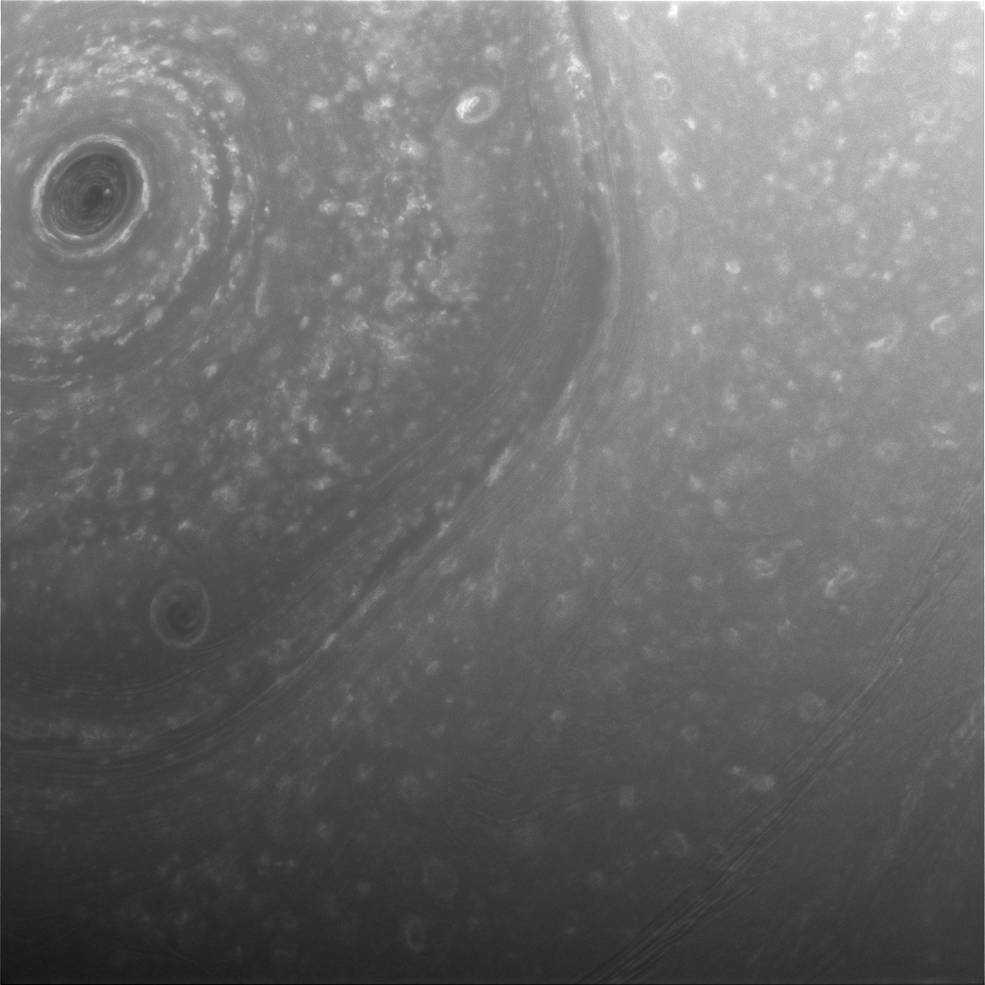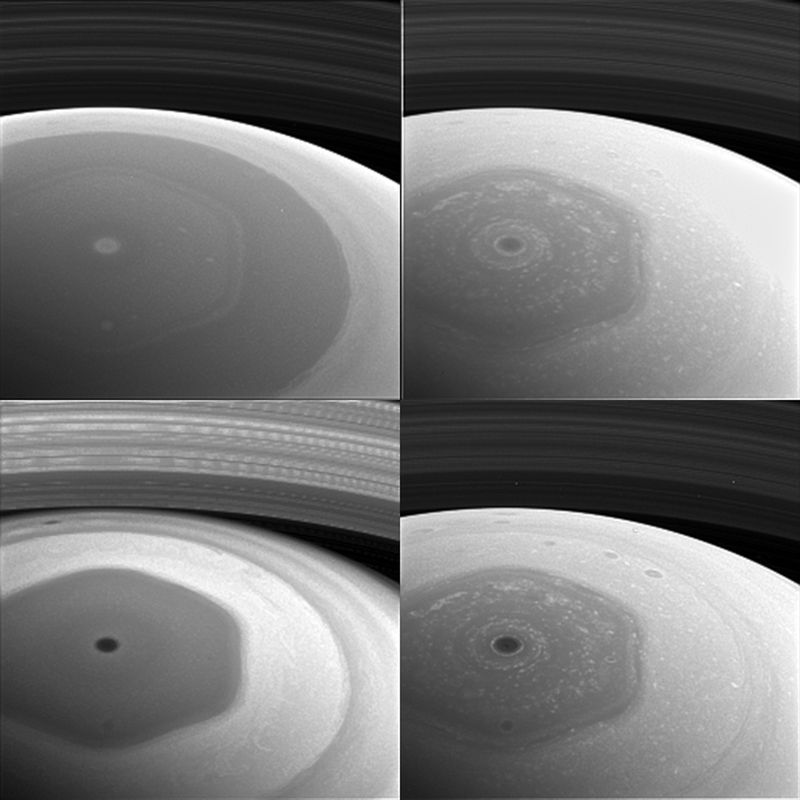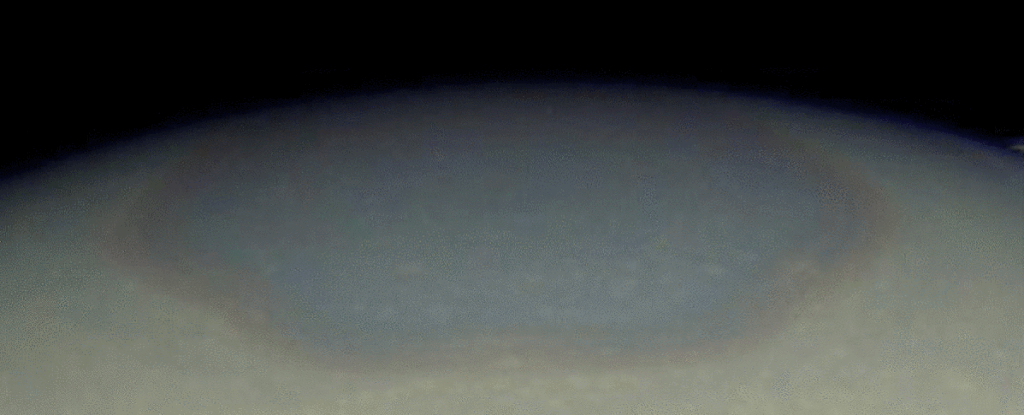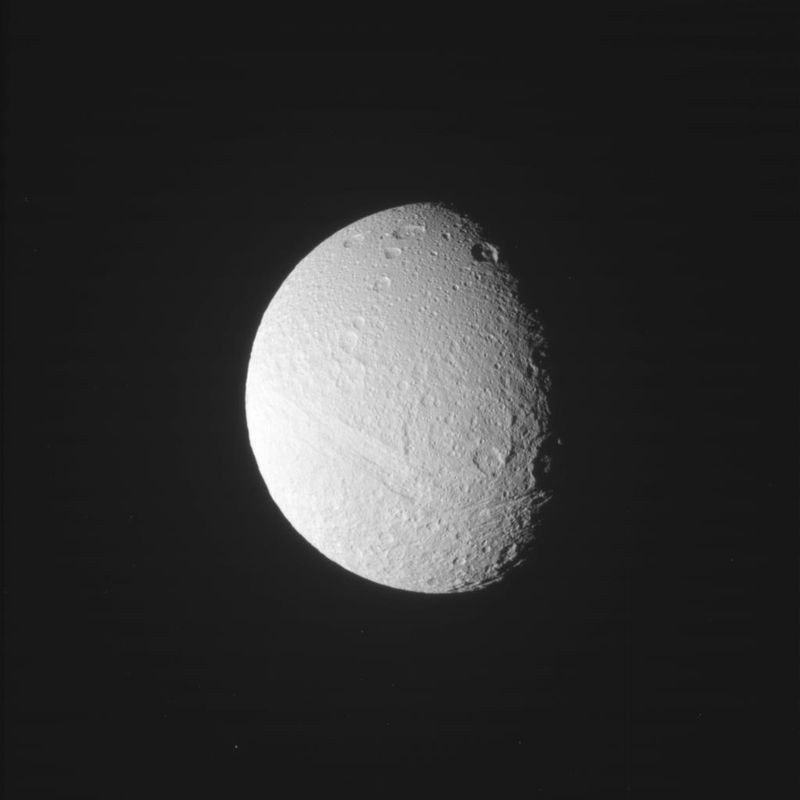Cassini sent the first pictures of Saturn from a new orbit

Hurricane from close range. The photo was taken with a Cassini wide-angle camera on December 3rd of this year. Source: NASA / JPL-Caltech / Space Science Institute
The Cassini probe has begun the final part of its mission - photographing the rings of Saturn as it passes through them. From November 30 of this year to April 22 of next year, the apparatus will move from the pole to the pole of this planet. Every seven days he now passes through the outer region of the main rings of the gas giant. In total, it is planned to complete about 20 such “shuttle” crossings.
The probe is equipped with a large number of scientific tools that have helped scientists more than once to obtain new information about various objects of the solar system. They are helping now. Recently, a probe sent to Earth images of the atmosphere of Saturn, showing an area in the northern hemisphere. The pictures clearly show the hexagonal storm in the atmosphere of the planet, the duration of which is several hundred years .
Photos obtained December 2-4, two days before the "diving" in the ring. All subsequent images will show new areas of the planet and its rings in high resolution. A number of photographs will be taken from the closest possible distance in the entire history of observations.
')
“This is the beginning of the end of our historical study of Saturn. These images and subsequent ones will remind you that we live during one of the most remarkable adventures: exploring the amazing planet of the solar system, ”says Carolyn Porco, one of the Cassini team members.
The next passage on the outer edge of one of the rings is scheduled for December 11.
Let me remind you that the first two "dive" Cassini makes through one of the thinnest and weakest rings of Saturn, formed by tiny meteors that hit the two moons of the planet, Janus and Epimetheus. In March and April, the probe will study the outer regions of ring F, which is characterized by a large amount of dust.
“Despite the fact that we are closer to the ring F closer than ever, it is still more than 7800 kilometers. There is practically no dust threat here, ”said Earl Maze, project manager for Cassini at NASA’s Jet Propulsion Laboratory .
The first photos of the hurricane on Saturn "Cassini" made back in 2004. The speed of movement of atmospheric masses here is about 150 m / s. And the “eye” of this storm is more than 50 times the size of the average “eye” of a hurricane on Earth. This object itself is several times larger than the Earth, its diameter is 32,000 km, the depth is at least 100 km.

These few photos were taken by Cassini on December 2, 2016. Both the hurricane and the rings are shown here. Each photo was taken using a filter sensitive to the wavelength of the light. Clouds and haze at different heights are visible
During his work, Cassini sent over 30 thousand photographs of both Saturn himself and his rings and satellites to Earth. Thanks to the work of the probe, scientists have received a huge amount of information about the gas giant.
This year, scientists have learned that Saturn’s hurricane changes its color over time. In about four years of observation, he changed from blue to golden. Why? So far, experts can only assume. Most likely, the reason - seasonal changes. The year on Saturn lasts 29 Earth years. Seasons change every seven years. And now the gas giant receives a maximum of sunlight, because before that there was a “winter” on Saturn.
“The change of color is probably only a consequence of the change of seasons on Saturn. In particular, the color transition from bluish to golden can be explained by the passage of photochemical reactions in the atmosphere, ”a NASA statement said . Interestingly, in 2017 it will be possible to observe the Saturnian solstice.

Another photo, below, was received on December 4th of this year. In this picture you can see Tethys, the fifth largest moon of Saturn with a very uneven surface. The largest crater of Tethys is about 400 km in diameter.

Unfortunately, already in September of this year, Cassini will begin to carry out the final stage of the mission - immersion into the dense atmosphere of Saturn. In early September, the probe will pass approximately 1600 kilometers from the top of the clouds. After that, it will sink into the atmosphere, what will happen on September 15. Scientists hope that the final will be useful for science - the device will be able to transmit a large amount of valuable scientific information about the composition of the atmosphere of the gas giant.
Source: https://habr.com/ru/post/369961/
All Articles